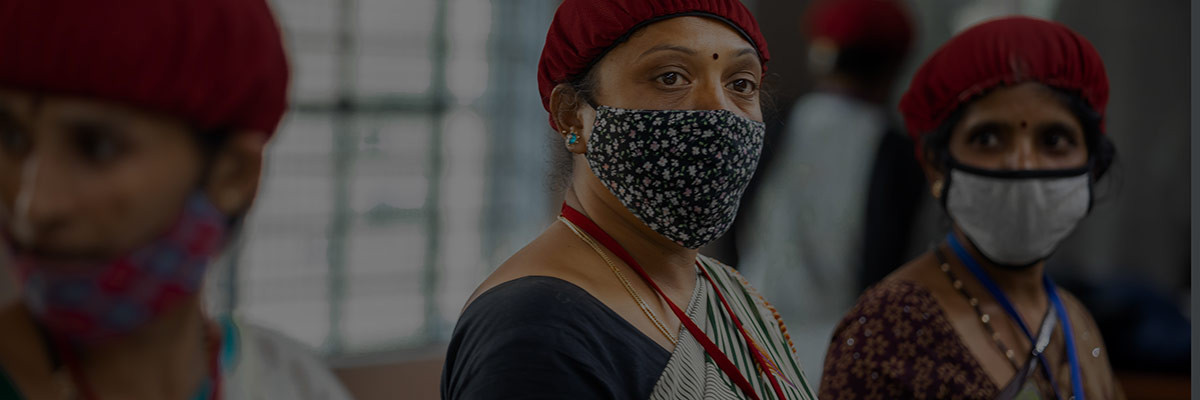
The fashion industry is transforming from linear to more circular business models—including repair, recycling, resale, and rental—while simultaneously being shaped by macro forces, such as automation and climate disruption.
This transition brings both an opportunity to proactively address the industry’s long-standing labor concerns by designing new business models and a responsibility to ensure that the new jobs created are good jobs.
The significant momentum behind circularity begs the question for both industry and policymakers: How can we leverage this transformation to reimagine and rebuild the global fashion system so that it works for all?
Through Keeping Workers in the Loop (KWIL), we convened over 45 major fashion industry players—established brands, emerging circular businesses, worker representatives, sustainable fashion experts, and international institutions—to explore this very question.
Our research uncovered three key findings:
1. As business models change, circularity offers an important opportunity for entrepreneurship and upskilling.
Growth and investment in circular fashion signal the significant commercial potential in transforming the fashion industry. For example, just four luxury resale platforms attracted over US$134 million in total investment in the sixteen months to August 2021. Businesses that offer recycling services, repair, rental, or resale platforms are emerging quickly and growing rapidly.
As major legacy businesses seek to adapt, circularity can also provide economic and entrepreneurship opportunities for workers. Our research, in which we surveyed almost 200 workers, suggests significant appetite to engage in and start new circular businesses. In India, 66 percent of workers surveyed, and particularly women, are keen to start their own businesses but feel constrained by lack of investment and business skills. Workers already possess much of the knowledge needed to successfully navigate the transition. For example, informal waste workers understand how garment and textile waste is segregated, processed, and reentered into the marketplace.
Jobs in the circular economy require soft skills such as agility, language and business skills, and technical competencies (e.g., garment deconstruction). Our research found that both skills (broadly) and training are currently lacking at all levels of the industry. Equipping diverse groups of workers with the necessary skills and entrepreneurship opportunities can accelerate the creation of a circular and resilient fashion value chain.
2. Marginalized and disenfranchised groups are overrepresented in value chain segments likely to expand in a more circular system, and there is a strong risk of perpetuating existing labor issues in circular roles.
The transition to a more circular industry means the opaque and complex global fashion value chain will expand to encompass new segments and activities like recycled plastic, agricultural waste, and textile recovery, sorting, and recycling. Our research found that the parts of the industry that are already circular today, such as waste-picking for recycling or sorting for resale, have some of the worst labor conditions, high levels of informality, and negative social impacts on communities. Informality in the garment and textiles industry poses a major challenge to a just, fair, and inclusive transition to circularity, as many of the activities to support a circular fashion system rely on informal workers. Furthermore, harassment, long working hours, and low levels of representation for workers are also key concerns among today’s circular workers.
3. The transition will take place amidst a backdrop of growing precarity and economic inequality throughout the global fashion system.
KWIL’s economic modeling suggests that circularity, automation, and other macro factors could significantly disrupt fashion industry job growth by 2030. The variation between the number of jobs today and what we see in the scenarios is a range of 6.72 million jobs—that’s over 11 percent of the fashion value chain jobs included in the model. Regional variance in job losses and/or gains across our economic scenarios is significant, with China and India seeing the biggest shifts. KWIL’s economic modeling also finds that wages in the garment and textiles industry are likely to be highly volatile relative to the rest of the economy. Worryingly, most scenarios see a decline in wages for low-skill jobs across geographies, whilst high-skill wages tend to increase.
Circularity’s social impact potential can only be realized through intentional action.
Our findings suggest that the circular fashion transition brings a number of potentially important benefits for workers, including:
- The potential of strong job creation;
- More multifunctional, stimulating roles, with improved health and safety for workers;
- Entrepreneurship opportunities, particularly for women, and;
- Increased potential to integrate informal workers into the value chain, offering them social protection etc.
Conversely, without intentional integration of jobs and social justice aspects, and adapting the operating norms in the industry, there is a real risk of perpetuating the same challenging outcomes for workers due to a lack of representation, consideration in decisions, regulatory protection, and an imbalance of power along the supply chain.
KWIL’s report highlights how changing industry dynamics and potential job disruption heightens the need to address these legacy industry challenges in the circular transition. To help prioritize a path to circularity that supports workers, it lays out 10 recommendations to enable a transition that is just, fair, and inclusive.
You can find the full report here, offering an initial mapping on skills needed, an exploration of how circularity will affect different roles, how job impacts will play out in diverse circular models, and detailed recommendations for both fashion and textile businesses and policymakers.
If you are interested in exploring how your company might work collaboratively with peers and BSR to help develop new strategic approaches which improve the global fashion system so that it works for all, please connect with our team.
This research project was developed and supported by a grant from the Laudes Foundation. The Foundation's partnership and financial contribution were invaluable to the success of the project. We are also very grateful for the contributions of Sida—the Swedish International Development Cooperation Agency, H&M Group, and Target to the project outcomes and to the diverse organizations that contributed their insights and ideas to this work.
BSR’s latest sustainability insights and events straight to your inbox.
Topics
Let’s talk about how BSR can help you to transform your business and achieve your sustainability goals.









